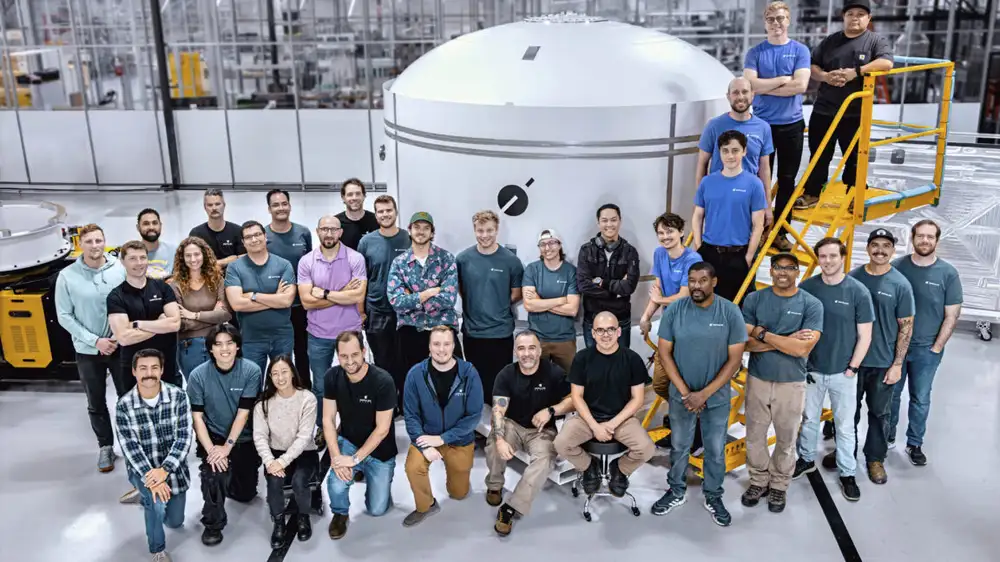This week an in-space propulsion company, Impulse Space, announced that it had raised a significant amount of money, $300 million. This follows a fundraising round just last year in which the Southern California-based company raised $150 million.
This is one of the largest capital raises in space in a while, especially for a non-launch company. To understand why Impulse was able to raise so much additional money so quickly, Ars caught up with founder Tom Mueller and the company's chief executive, Eric Romo. They explained that demand for Impulse's efficient in-space vehicles is high, and since early missions have worked well, the company wants to seize the moment to scale up its operations.
"We had been operating relatively conservatively, in how many people we were allowing ourselves to hire and capital expenditures," Romo said. "This will allow us to release a little bit of that conservatism and lean into some stuff like electric propulsion and potentially other vehicles that are going to allow us to grow long-term."
The company presently has about 250 employees, and they are crammed into the company's 60,000-square-foot facility in Redondo Beach. Impulse would like to reach 300 employees by the end of the year and find a larger headquarters for its expanding vision.
Although Impulse Space is only about 4 years old, it has already had some sparkling successes and is nearing completion of a new vehicle called Helios that could meaningfully improve the ability of SpaceX's Falcon 9 and Falcon Heavy to ship large payloads to the Moon, Mars, and other destinations in the Solar System.
Starting small
The company's initial product was the Mira spacecraft, powered by nitrous oxide and ethane thrusters. It can move payloads up to 300 kg around in space, and for a 100 kg payload it offers 900 m/s of Delta-V. With Mira, Impulse sought to tackle the problem of mobility once a spacecraft got into orbit.
Mira proved a success almost immediately, with the first vehicle launching in 2023 and operating for a year in space, demonstrating ample mobility before finally depleting its propellant tanks. A second mission, LEO Express-2, launched in January with several hosted payloads and, so far, has met all of its objectives. The mission remains ongoing.
Initially, it was believed that this vehicle would be useful for providing "last mile" services for spacecraft launched as a part of rideshare missions.
"The reality is the market for that is not very good," Romo said. "If you're gonna size that market, it's basically the market Rocket Lab serves today, which is 25 to 30 flights a year, which is fine. You can do that, but not economically very well. Your gross margins won't be good. Your working capital kind of sucks. So that's not at all the market that we're after with Mira."
Since Mira has had ample success during its first two flights, other customers have taken notice.
"It's a high-thrust, high-maneuverability spacecraft that can operate anywhere up to GEO," Romo said. "And so when you're thinking about space defense and space control, they need rapid response. So we'll move from one part of GEO to another very rapidly. And we can host payloads, like what Anduril makes, such as electronic warfare payloads, and then potentially doing proximity ops missions. So Mira wasn't necessarily designed out of the gate for that, but what we found out after we flew it successfully was, the Space Force said, 'Hey, we know what that thing's for.'"
Getting bigger
After Mira, Impulse Space has been working on the larger Helios vehicle, which is designed to ride as a kick-stage on various large rockets. Helios packs a real punch, with an engine capable of producing 15,000 pounds of thrust and the ability to move a multi-ton payload from low-Earth orbit to geostationary space in less than a day.
Mueller also said he believes that Helios has significant implications for interplanetary science missions.
"It just really increases your payload capacity," he said. "We looked at a case where a rocket can throw less than 2 tons to Mars. But with Helios, it was like 11 tons. So it's just a huge advantage."
The company is currently targeting a launch of Helios in the third quarter of next year and recently secured three Falcon 9 launches to launch its first three Helios spacecraft.
It is natural for Mueller to work with SpaceX, of course. He was a founding employee and led the company's propulsion department for more than a decade. Once he saw that launch was becoming a solved problem, Mueller moved on to what he saw as the next frontier, taking advantage of that launch capacity and improving the ability of spacecraft to move around in low-Earth orbit and beyond.
"We want to open up the capabilities of LEO and above and greatly reduce the cost of getting anywhere else past LEO," he said. "There are lots of things that we've dreamt about for decades, like a base on the Moon or mining asteroids or putting humans on Mars. We want to see lots of things happen, and hopefully we can reduce the cost and help make it happen."

 NotebookLM si aggiorna: ora è possibile condividere quaderni e podcast con tutti
NotebookLM si aggiorna: ora è possibile condividere quaderni e podcast con tutti